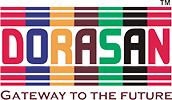The original DAS was developed from the BAS (British Ability Scales) both by Collin D. Elliot and published by Harcourt Assessment in 1990.
The DAS-II consists of 20 cognitive subtests which include 17 subtests from the original DAS. The subtests are grouped in to the early years and school age cognitive batteries (Array/Group) with subtests that are common to both batteries and those that are unique to each battery. These batteries provide the General Conceptual Ability (GCA) score, which a composite score is focusing on reasoning and conceptual abilities.
The early years core battery includes verbal, nonverbal and spatial reasoning subtest appropriate for ages 2 years 6 months to 6 years 11 months. There are three optional diagnostic subtests – Recall of Objects Immediate and Delayed, Recall of Digits Forward and Recognition of Pictures. There are also two optional diagnostic clusters: Working memory and processing speed.
School age core battery contains subtest that can be used to asses children ages 7 years to 17 years 11 months. These subtests measure verbal, nonverbal reasoning and spatial reasoning abilities. The subtests can also be used to assess children age 5 years to 6 years 11 months who may be cognitively gifted. In addition there are up to 9 diagnostic subtests for this age group that fits into three possible diagnostic cluster scores: Working memory, Processing Speed and for the young ages, school readiness.


